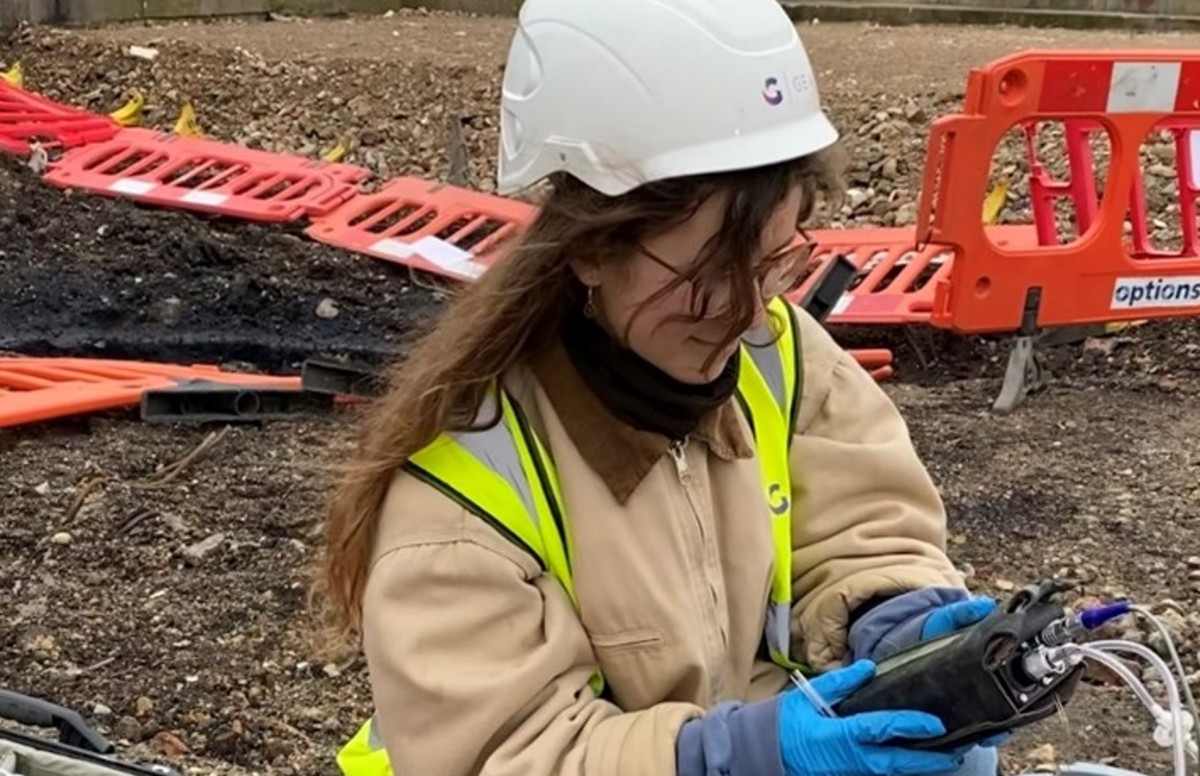The 6-Second Trick For Geotheta
The 6-Second Trick For Geotheta
Blog Article
Getting The Geotheta To Work
Table of Contents8 Easy Facts About Geotheta ExplainedSee This Report about GeothetaGeotheta - TruthsSome Of Geotheta
They team up with civil engineers, architectural engineers, engineers, and various other specialists to integrate geotechnical considerations right into the overall job design and building and construction procedure. This calls for reliable synergy, sychronisation, and communication to make sure that the geotechnical elements line up with the project purposes and fulfill governing demands.Mining & Materials Design: Principles of boring, penetration prices, and factors affecting the choice of boring approach. Blasting methods in surface and below ground functions. Mechanical and continuous approaches to fragmentation, consisting of longwall shearing and fullface boring.
Modelling of fragment and particle dimension circulations; comminution as a transfer function. Comminution technology: squashing, grinding, size category. Integrated evaluation of fragmentation and comminution operations. Used by: Mining & Products Engineering.
Geotheta Can Be Fun For Everyone
Bachelor's level programs in civil, geotechnical, geological, and environmental design typically last four years and include basic education courses in English, social scientific research, and the liberal arts, as well as training courses in sophisticated maths, architectural geology, and liquid mineralogy. (https://geotheta.weebly.com/)
Geotechnical engineering entails the evaluation of the dirt and rock problems at a specific site, and their implications for the advancement of that website. As the majority of structures depend on the ground for support, it is without shock that a comprehensive understanding of the ground problems, and the viability of foundation systems, are important to the lasting security and performance of the building or framework.
Being experts in the examination of geological formations and ground practices, geotechnical designers do clinical examinations and screening to understand the influence these geological formations may carry the style and building of building, civil and facilities projects. This know-how is important for the layout and construction of structures, roadways, tunnels, dams, bridges, and water and sewage systems.
The geotechnical team at Douglas Allies regularly talk to designers, style designers, programmers, and building contractors to make suggestions on layout and growth proposals to guarantee that the developed structures are accordingly designed for the ground problems. For instance, the style of footing systems requires to take into consideration the weight of the framework, the capability of the ground to sustain that weight along with motion tolerances and reliable construction.
How Geotheta can Save You Time, Stress, and Money.
This task is significantly simplified by the use our Douglas Map geospatial system which makes this information conveniently obtainable in a very easy to use web browser interface. A geotechnical engineer will direct the boring of boreholes and examination pits to collect dirt and other samples, and also assess surface features and ground direct exposures to form a geotechnical design of the subsurface conditions.
Relying on the job kind and ground conditions ran into, research laboratory screening may amongst various other points examine toughness, compressibility, sensitivity and/or leaks in the structure of dirt and rock samples. Hereafter data is accumulated and collected, the outcomes are utilized for a geotechnical version of the site, which is typically provided as sections throughout the site.

A geotechnical examination naturally can only evaluate the ground conditions at the places drilled or dug deep into. All-natural variants in soil and rock problems can take place across a site and between examination places. It is consequently excellent practice that the geotechnical engineer be maintained throughout building of the project to supply on-site confirmation that the ground problems come across are constant with the assumptions and suggestions supplied in the geotechnical examination record.
Our Geotheta Statements
Geotechnical designers utilize their extensive expertise of dirt and rock to analyze threat and resolve troubles on diverse facilities projectsGeotechnical design is a specialist branch of civil engineering which looks at the practices of planet products and the application of dirt and rock technicians. Tailings Engineer. As a geotechnical engineer, you will assess the physical, mechanical and chemical residential or commercial properties of dirt and rock in order to develop foundations, retaining frameworks and earthworks
Geotechnical design is closely connected to and overlaps with, both design geology and ground engineering - https://www.awwwards.com/geotheta/. It's possible to specialise in geotechnics or work for a geotechnical company however be known as an engineering geologist or a ground designer. As a geotechnical designer, you'll need to: develop and preserve relationships with clients and various other specialists associated with the site, throughout each projectmaintain safety and security standards on site be conscious of cost implications when you make recommendationsstudy geological maps and aerial photographs from a range of resources and from different time periodsexamine building plans to see just how feasible they are based on your understanding of the siteinvestigate dangers or geological hazards for the sitesearch for eco sensitive attributes, such as land fill beginning to create factual and expository ground modelsplan field investigationsdrill and analyse examples of bedrock, soil, groundwater and additional products supervise other experts on sitesolve technological concerns as they occur, such as unanticipated frameworks at drill sitesmonitor conditions during and after construction to ensure frameworks are secure in the brief and long termadding information collected on website to your preliminary researchcreating geotechnical calculations, illustrations, and two or three-dimensional computer models translating the datamaking recommendations regarding the suggested use the site

Report this page